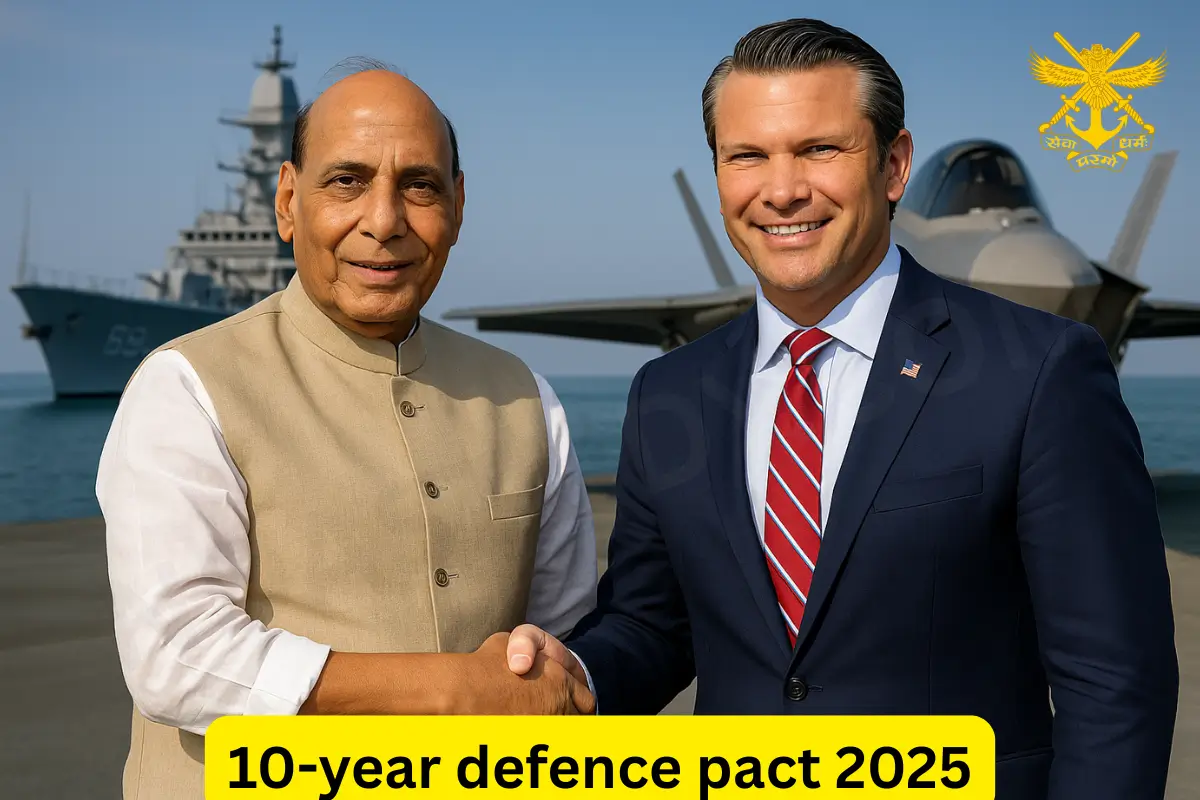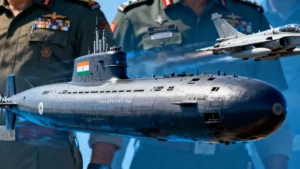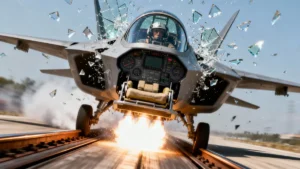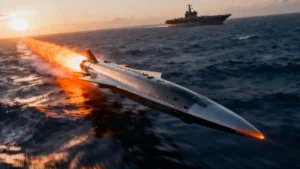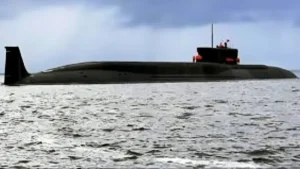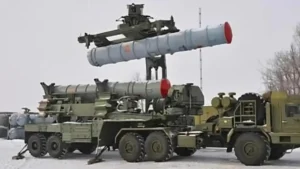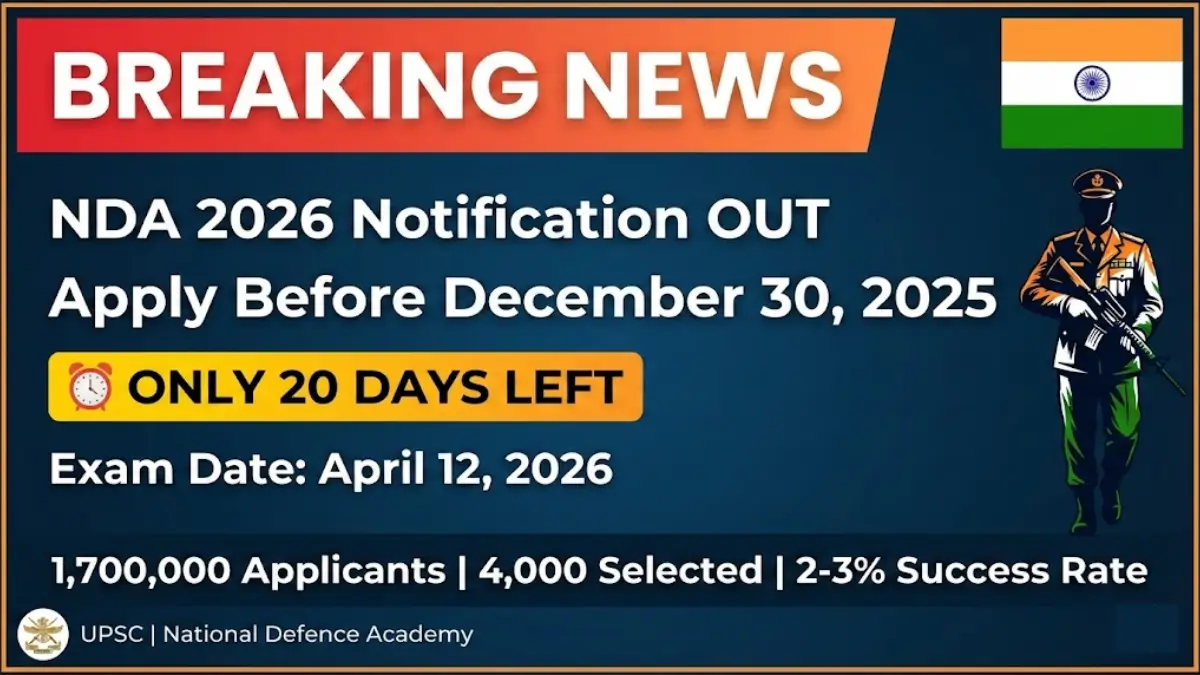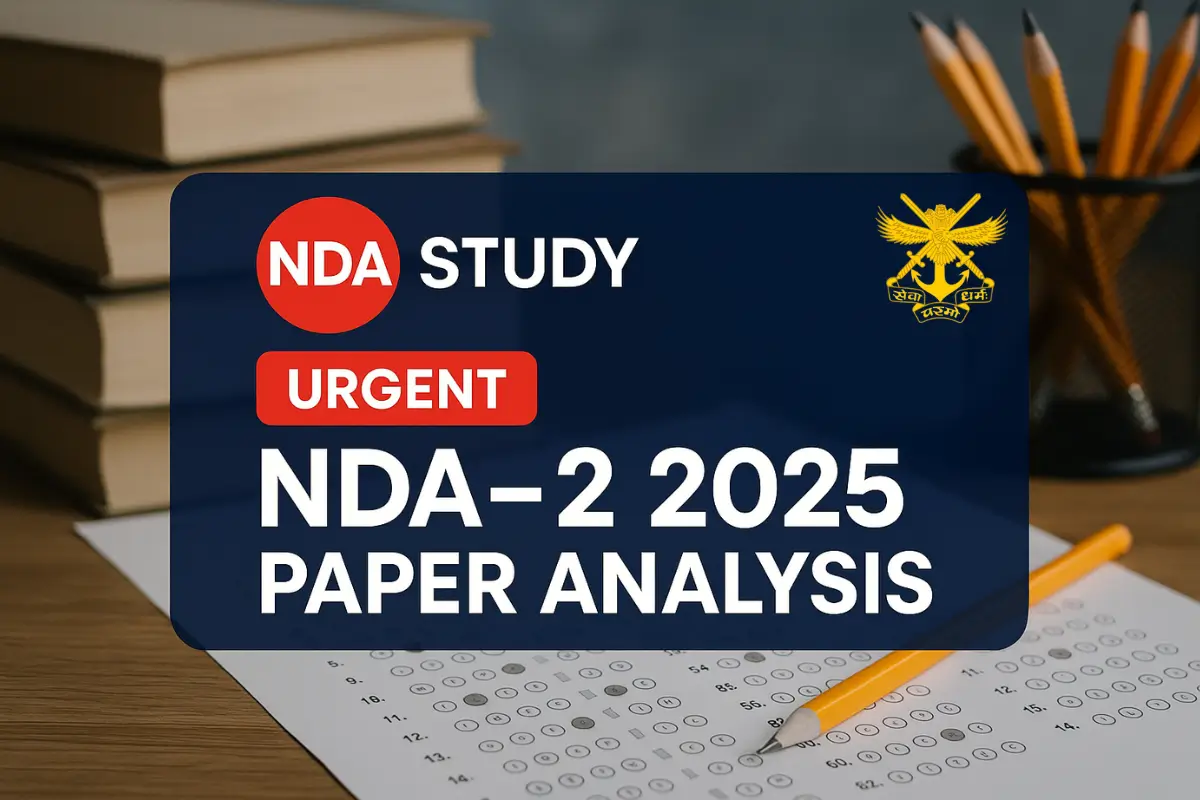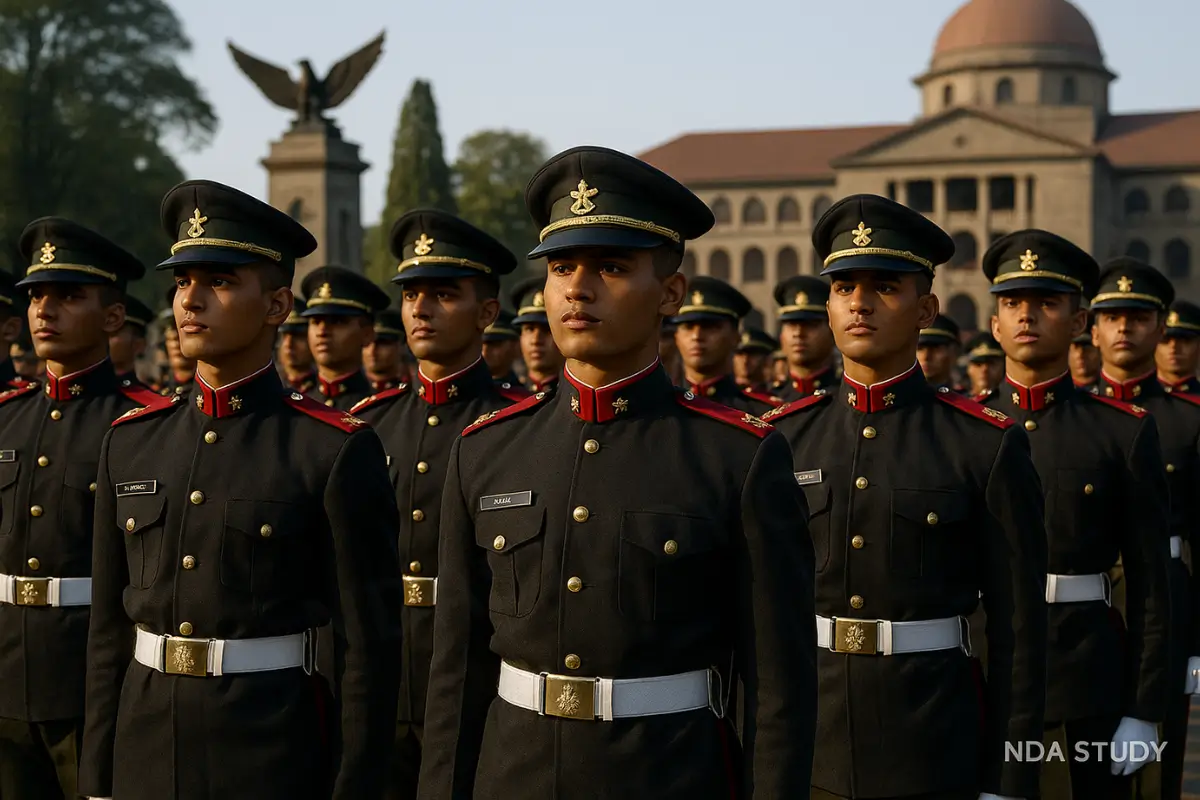In 2024, India’s defence budget surpassed ₹6 lakh crore, representing a significant investment in national security and technology. This increase comes at a crucial time as India and the United States prepare to announce the India-US 10-Year Defence Pact for 2025. This strategic framework aims to redefine military cooperation, technology transfer, and defence manufacturing for the next decade. For India’s youth and defence aspirants, this agreement is not just a policy change; it opens up new opportunities in research, innovation, and global engagement. As the Indo-Pacific region faces increasing security challenges, the pact is expected to strengthen India’s role as a regional power while empowering the next generation to contribute to the nation’s defence and technological future.
The India-US 10-year defence pact 2025 grants India access to advanced military technology, boosts local manufacturing, and enhances border security, creating job opportunities and world-class training in the defence sector.
India-US 10-Year Defence Pact 2025: Background & Timeline
The India-US defence relationship has evolved significantly, growing from a modest $500 million in US military aid during the 1962 Sino-Indian War to over $20 billion in cumulative defence trade by 2020. This partnership has become one of the most dynamic strategic collaborations in the world. The upcoming India-US 10-year defence pact 2025 highlights decades of trust-building, technology sharing, and shared security interests, which are especially important as India’s youth seek new opportunities in defence innovation and national service.
Key milestones in this journey include the 2005 New Framework for Defence Cooperation, which established the groundwork for joint exercises, technology transfer, and co-development projects. The 2016 designation of India as a Major Defence Partner opened access to advanced US military technology and set the stage for essential agreements such as LEMOA and COMCASA, which enhance interoperability and logistics support.
Prime Minister Modi’s visit to the US in June 2023 resulted in historic agreements, including the co-production of GE F-414 jet engines and the acquisition of MQ-9B advanced drones. These developments represent a significant advancement in indigenous manufacturing and operational capabilities. The joint statement released in February 2025 reaffirmed this positive trajectory, announcing negotiations for the India-US 10-year defence pact and signalling a new era of strategic military cooperation, innovation, and youth empowerment in the Indo-Pacific region.
Details of the 10-Year Defence Framework
India’s defence sector is currently experiencing a surge in investment and innovation, highlighted by the upcoming India-US 10-year defence pact set for 2025. This agreement represents a significant advancement in bilateral military cooperation. It aims to enhance interoperability, streamline logistics sharing, and expand joint military exercises—all essential for rapid response and operational effectiveness in today’s high-stakes security environment.
A key focus of the pact is defence-industrial collaboration, particularly through the “Make in India” initiative, which seeks to boost domestic manufacturing and decrease reliance on imports. Important features of the agreement include the co-development and co-production of advanced defence technologies, such as jet engines and missile systems, as well as the integration of supply chains between Indian and US defence industries. This will not only expedite the transfer of cutting-edge technology but also create new opportunities for Indian engineers, technicians, and young people entering the defence sector.
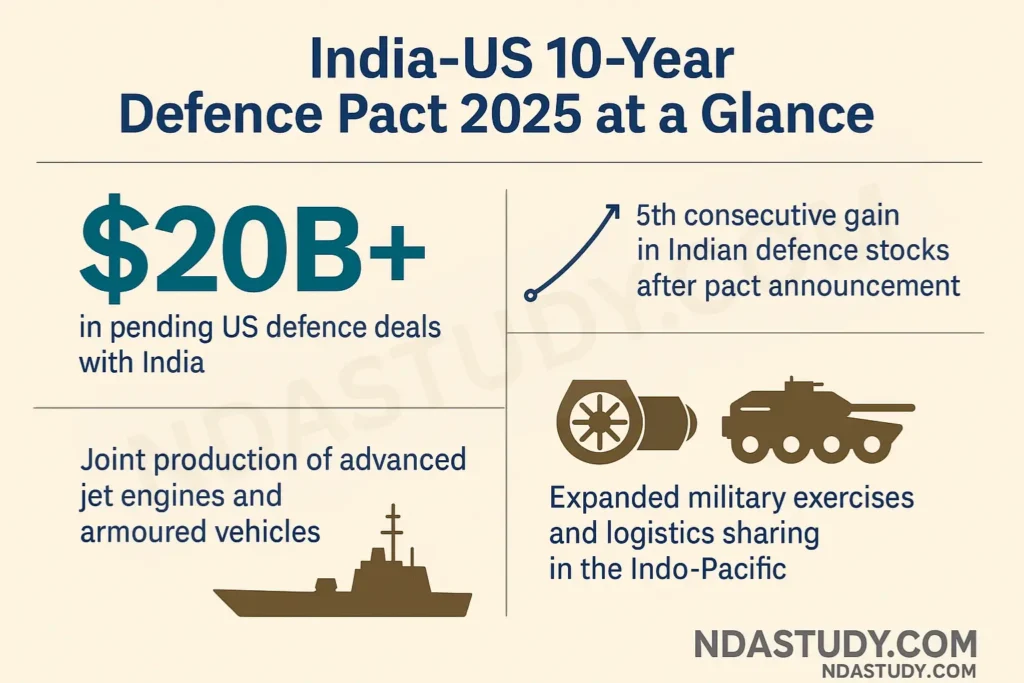
Discussions leading up to the pact have concentrated on resolving outstanding US defence deals with India, including the joint production of GE engines and the procurement of advanced drones and helicopters. By fostering a robust ecosystem for innovation and skill development, the India-US 10-year defence pact 2025 is poised to enhance India’s strategic autonomy and position the country as a key security partner in the Indo-Pacific region.
Pending Major Defence Deals
India’s defence sector is about to undergo a significant change thanks to the new 10-year defence pact with the US, which will unlock over $20 billion in pending defence deals. This increased partnership is already having a positive impact on the stock market, with shares of leading Indian defence companies climbing after the Pentagon announced the new strategic agreement. For young people in India and those interested in joining the defence forces, these deals mean better national security and many new opportunities in advanced technology and manufacturing.
Key Pending Major Defence Deals:
- Drones (Predator/Sea Guardian): Acquisition of advanced unmanned aerial vehicles to improve India’s surveillance and strike capabilities in the Indo-Pacific region, with ongoing discussions for technology transfer and potential local assembly.
- Missile Systems: Accelerated procurement and co-development of next-generation missile systems to enhance operational readiness and foster indigenous innovation.
- Jet Engines (GE F404/F414 for Tejas, HAL-GE tie-up): The collaboration on GE’s F404 and F414 engines for India’s Tejas fighter jets is progressing well, promising a significant boost to the “Make in India” initiative and the domestic aerospace ecosystem.
- Technology Transfer Agreements: Comprehensive frameworks to enhance high-end technology transfer, simplify arms procurement, and incorporate Indian suppliers into global US defence supply chains.
Under the India-US 10-year defence pact set for 2025, these deals will modernise India’s armed forces. They will also create thousands of high-skill jobs and promote research and development. This will help position India as a significant player in global defence manufacturing. The focus on working together and producing equipment marks a new phase of self-reliance and independence for India’s defence sector.
Strategic Significance: Indo-Pacific and China Context
Rising tensions and competition in the Indo-Pacific make it more important for countries to work together on security. The United States has named the Indo-Pacific as its main focus, stressing the need for strong partnerships to keep an open and free international order. This is crucial given the complex security challenges and the increasing influence of China.
For India, this situation brings both risks and opportunities. Working more closely with the US through better cooperation in areas like military operations, logistics, and intelligence sharing places India at the centre of the regional security system. This partnership helps India counter China’s assertiveness, builds its ability to deter threats, and ensures it can respond quickly to regional crises.
We reviewed our defence cooperation and looked for ways to strengthen our relationship
Rajnath Singh, Indian Defence Minister
Joint military exercises, advanced technology, and supply chain cooperation help India protect its interests and promote stability in the Indo-Pacific. US officials have stressed the need for clear and useful intelligence and systems that work across different military branches to tackle changing threats. Indian leaders emphasise the importance of using technology, innovation, and trustworthy partnerships for long-term security. As the US Department of Defence invests in cybersecurity, space capabilities, and missile defence, India’s growing role as a strategic partner not only boosts its own security but also helps maintain stability and prosperity in the region.
NDA Study’s Expert & Official Statements
In recent discussions, Indian Defence Minister Rajnath Singh highlighted the need to speed up major defence purchases and improve cooperation with the United States. He said, “We reviewed our defence cooperation and looked for ways to strengthen our relationship.” Singh emphasised the importance of working together on operations, intelligence, logistics, and manufacturing. He also urged for a quick completion of the agreement between Hindustan Aeronautics Limited and GE Aerospace to produce advanced jet engines, stressing the value of making these engines in India.
US Secretary of Defence Pete Hegseth confirmed that the United States sees India as a key defence partner in South Asia and prioritises this relationship. Pentagon officials reported that both countries have made significant progress toward their defence goals since the joint statement by President Donald Trump and Prime Minister Narendra Modi in February 2025. The US Department of Defence also stressed the need for close defence cooperation, joint military exercises, and the integration of supply chains, all of which will be vital for future regional security and technological development.
Author’s Words & Takeaways
This moment marks a significant turning point for India’s defence and strategic ambitions. The recent agreements and partnerships with the United States go beyond just military hardware; they signify a move towards self-reliance, advanced technology, and a stronger voice for India in the Indo-Pacific region. For young Indians and future leaders, this presents an opportunity to engage with cutting-edge innovation and global security challenges. Stay informed and participate in this historic journey—share your thoughts below, follow us for real-time updates, and join the conversation that is shaping India’s future on the world stage.
Stay Tuned & Stay Connected!
